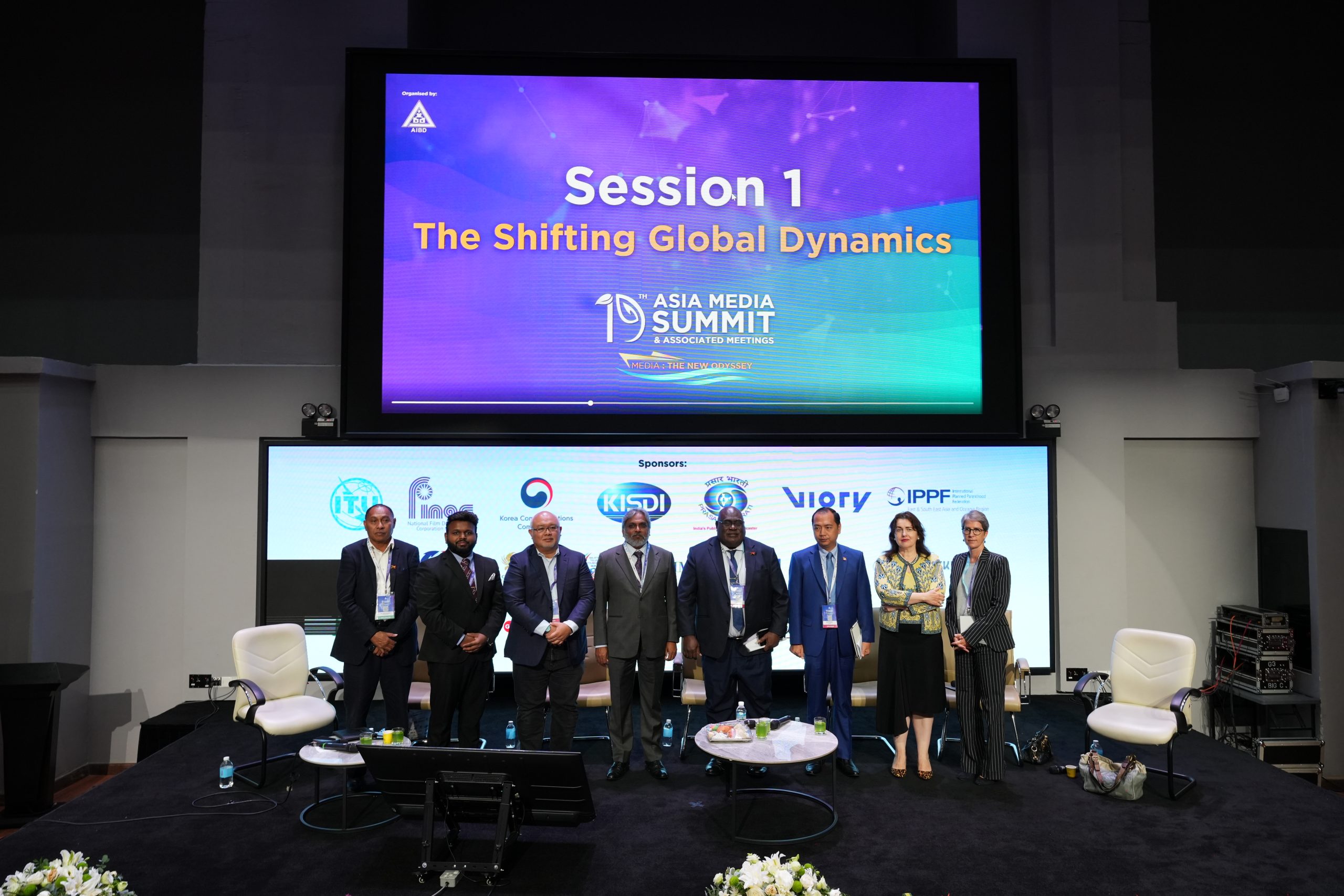Regulation & Disinformation
Various perspectives on regulation as a mechanism to effectively counter the spread of disinformation/fake news were presented during the plenary session on “Disinformation and New Media” at the 16th Asia Media Summit in Siem Reap, Cambodia. The session, in collaboration with UNESCO, was moderated by Dr. Ming Kuok Lim, Advisor for Communication and Information, UNESCO, Jakarta.
Dr Masato Kajimoto (PhD), Assistant Professor, Journalism and Media Studies Centre, University of Hongkong, said dealing with disinformation need not necessarily involve regulation because this may impinge on people’s right to freedom of expression.
However, he said, there are exceptions that can be considered such as child pornography or if the disinformation aims to instigate violence.
“Any regulation also requires a clear definition of fake news’, Mr Masato said.
In his presentation, he asked participants whether trust in media can help combat disinformation. He said journalists might say they are to be trusted because they are committed to accuracy and fairness, or that they are accountable for their content, ethically conscious with a reliable track record. “But trust is complicated because it involves both dependence and risks”, he said.
He also said that trust wouldn’t help much because the audience is far less dependent on traditional media.
“The audience needs high level of news literacy to discern accuracy. Your “fair” news coverage could look “biased” in the eyes of the news audience, especially when their trust is placed elsewhere already”, he said.
In the Philippines, Mr John Nery, Associate Editor and Philippine Daily Inquirer columnist, said there is greater resistance to ‚fake news’ legislation. He talked about an invisible machine of networked disinformation working in the Philippines.
Behind this machine are “public relations and advertising strategists who liaise with political clients and set campaign objectives”, he pointed out.
He said there are also the digital influences who are anonymous operators of social media pages, and community level fake account operators who amplify reach and create illusions of engagement.
“They are devaluing information, using untruths to push strategic objectives. This is the new normal”, he said.
In his presentation he said there are seeds of resilience against the spread of disinformation in the country brought about by, among others, more scholarly attention on disinformation and the ‘psychology of misinformation’, greater multi-sectoral cooperation among academe, media, etc., more ‘immediately empowering’ workshops, and more global and regional cooperation.
In Cambodia, Ms Chhorn Navy, Deputy Director of Broadcasting Department, Ministry of Information said inter-ministerial proclamation, media laws, criminal code and audience feedback are some of the mechanisms they use to deal with disinformation.
Under this proclamation, “authorities take action on the blocking of websites and/or social networking sites that launch illegal commercial activities and/or deliberate dissemination of information to trigger social unrest, disrupting national defense, national security, national relations, public order and public order, discrimination and traditional culture”, she said.
She also said that a Ministry of Information App has been set up to enable citizens to provide feedback and platform for government to respond to their concerns on disinformation, among others.
Regulation of internet platforms has been a controversial issue in Europe, according to Mr Roland Husson, Counsellor for Cooperation and Cultural Affairs, French Embassy in Malaysia.
In his presentation, he identified some measures that might be done in regulating internet platforms. These include significantly improving the scrutiny of advertisement placements, ensuring transparency about sponsored content, intensifying efforts to close fake accounts, facilitating users’ assessment of content through indicators, establishing clear marking systems for bots (not confused with human interactions).
“Online accountability is key: Identification and traceability of the source of disinformation”, he said.
Ms Anne Kruger, First Draft News Bureau Chief, Sydney, Australia, spoke about efforts to track anti-muslim tactics online during the recent Australian elections. She cited a Facebook page ‘Fair Suck of the Sav, Mate’ that claimed Muslim Australians used burqas to hide their identities to vote multiple times.
To better understand information disorder, she identified seven types of disinformation and misinformation, namely, satire or parody, misleading content, imposter content, fabricated content, false connection, false context, and manipulated content.
She urged media to pursue the process of verification to arrive at accuracy and fairness in news reporting.




